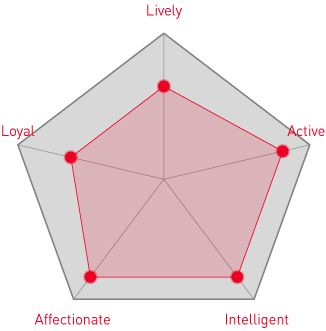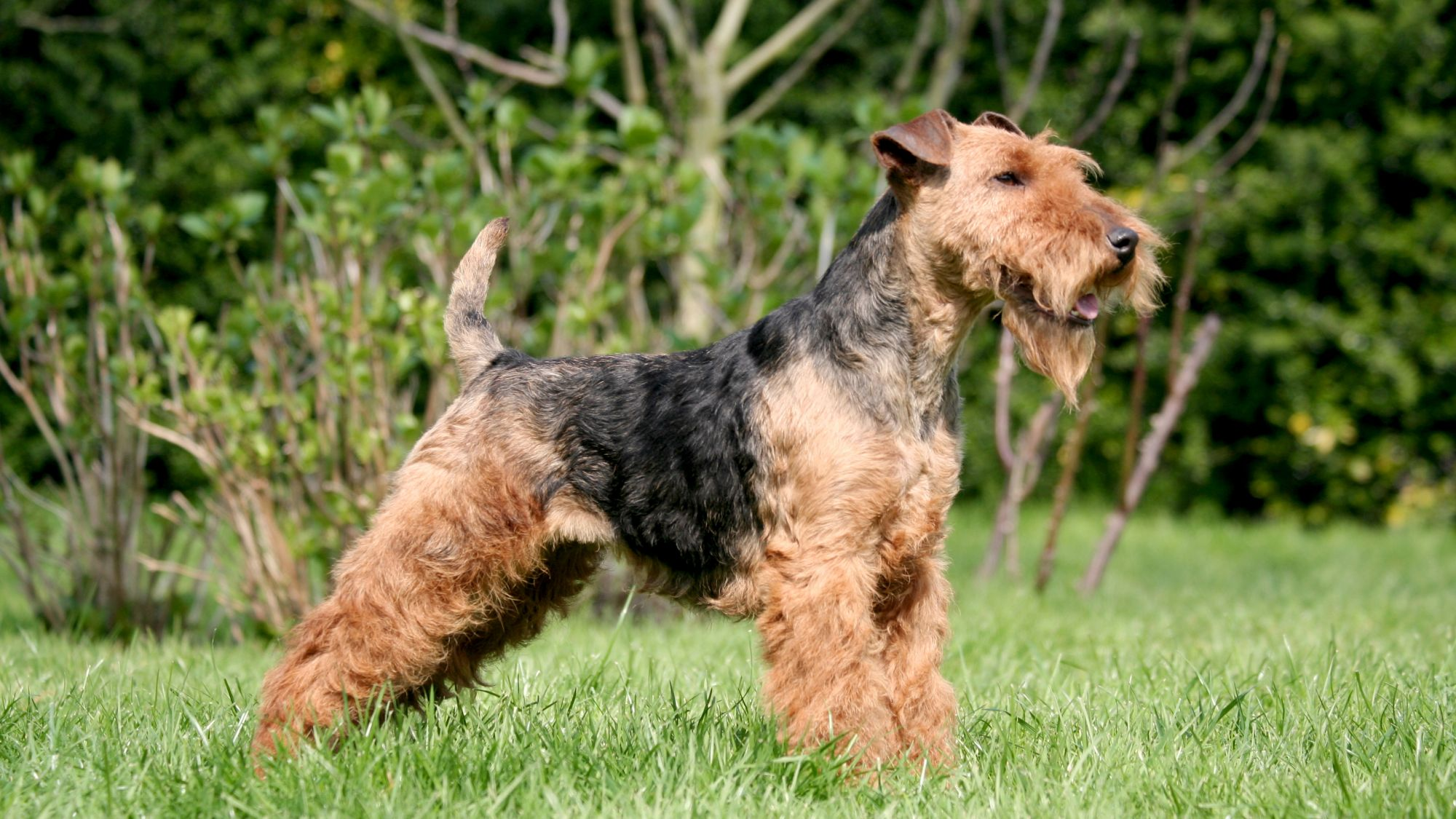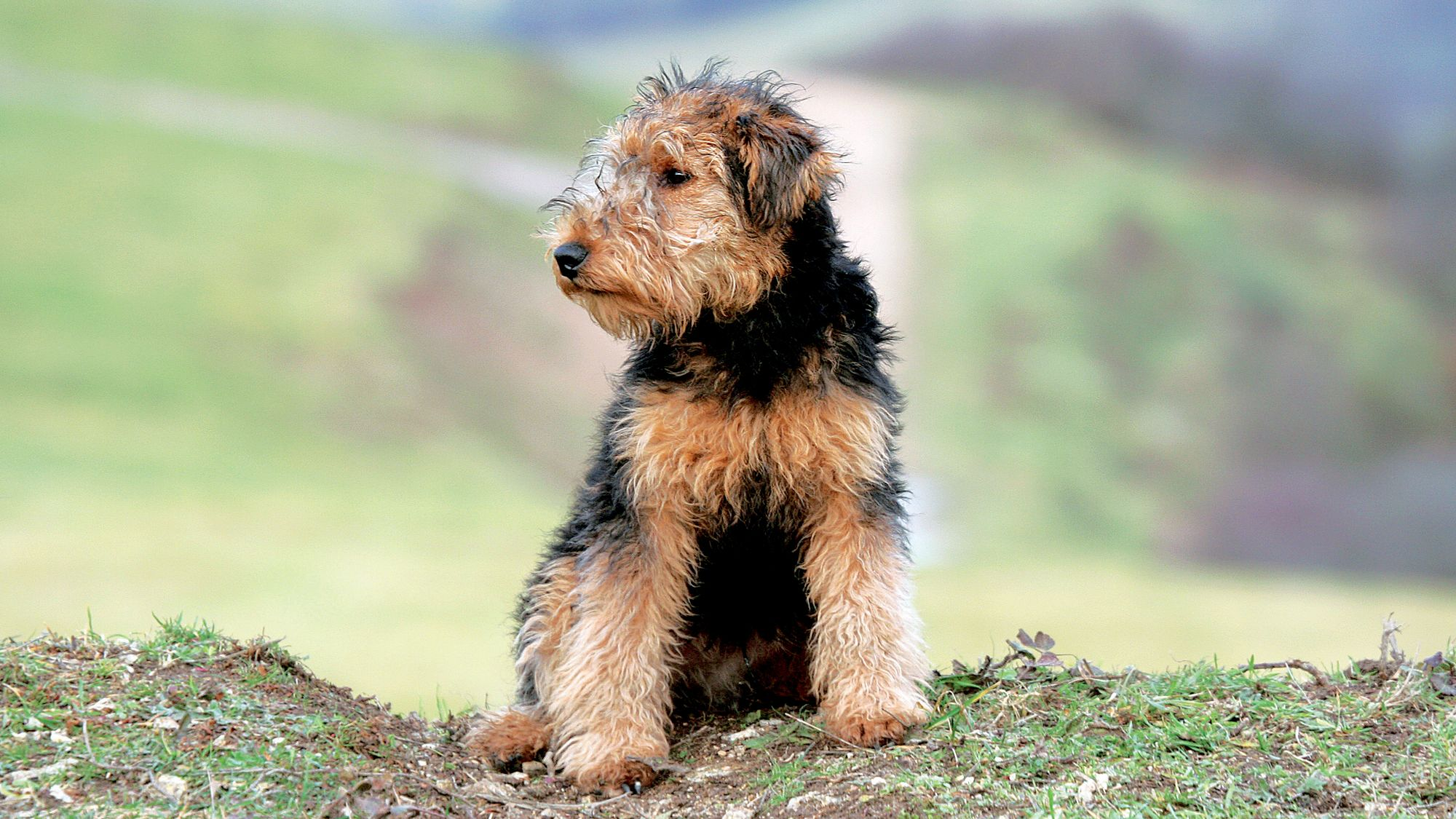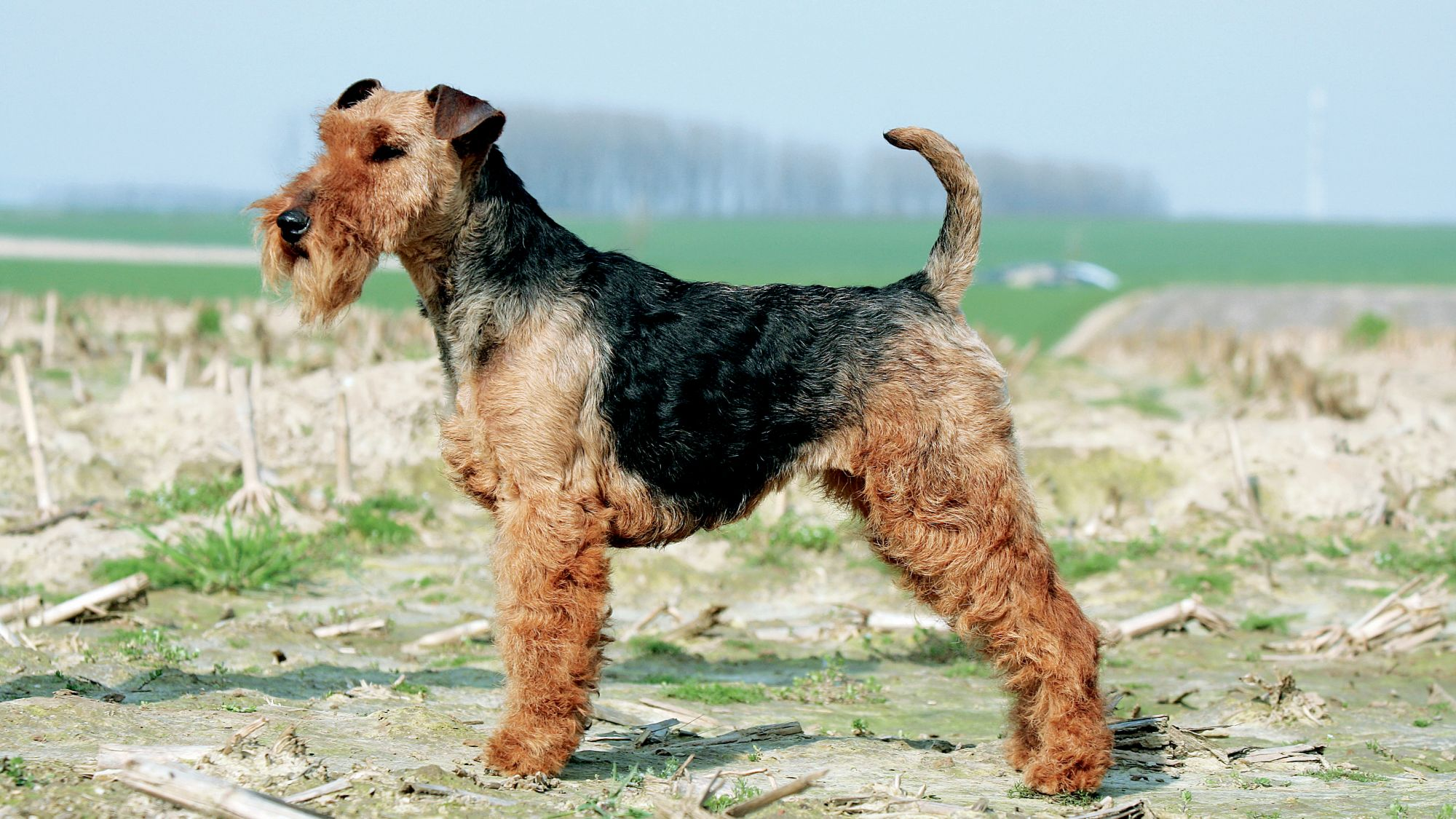
Let's talk Welsh Terriers
“Could a breed be any more of a Terrier?” is a legitimate question for the jolly Welsh Terrier. This is a high energy canine, emphasis on the high, with intelligence and a determined nature. Originally bred to hunt in the lush landscape of Wales, the medium-sized Welsh Terrier is now appreciated as an affectionate playmate to families of all sizes. Welsh Terriers handle apartment life pretty well, with undemanding grooming needs and a low-shedding coat.Official name: Welsh Terrier
Other names: Welshie
Origins: Wales

| Drooling tendencies: |
|
Warm weather? |  |
| Shedding level: |  |
Suited to apartment living? | |
| Energy level (high, low, medium) *: | High | Family pet?* |
|
| Compatibility with other pets: | Can stay alone?* | 
|
* We advise against leaving pets alone for long stretches. Companionship can prevent emotional distress and destructive behaviour. Speak to your veterinarian for recommendations.
Every pet is different, even within a breed; this snapshot of this breed’s specifics should be taken as an indication.
For a happy, healthy and well-behaved pet, we recommend educating and socialising your pet as well as covering their basic welfare, social and behavioural needs.
Pets should never be left unsupervised with a child.
All domestic pets are sociable and prefer company. However, they can be taught to cope with solitude from an early age. Seek the advice of your veterinarian or trainer to help you do this.


| Baby age: | Birth to 2 months |
| Puppy age: | 2 to 10 months |
| Adult age: | 10 months to 8 years |
| Mature age: | 8 to 12 years |
| Senior age: | From 12 years |

1/7
Get to know the Welsh Terrier
All you need to know about the breed
Life with a Welsh Terrier is one big adventure—buckle up. This fluff ball requires one hour of exercise per day, minimum, so is best suited to an active family. They handle apartment life well, as long as they can burn off enough steam outside during exercise time. If you have a garden, your Welsh Terrier will relish playing in it—just distract them from digging tunnels by dusting off the frisbee.
They may look like a toy teddy but behind those adorable eyes lies an intelligent dog with a determined (though not obstinate) and curious nature. The Welsh Terrier is often on alert, making for a great watchdog, but is equally content to clown around. Once trained, they can be an excellent playmate for children. Supervision around wee ones is advised, due to the breed’s bounciness.
One thing is for certain: Wherever the action is, your Welsh Terrier is likely to be at the centre of it. This breed may not be for first time owners, or the faint of heart, but the pleasure payoff is well worth the investment. And they sure do like to snuggle.

2/7
2 facts about Welsh Terriers
1. Independent canine
Their independent streak is part of why Welsh Terrier dogs are not well-matched to first-time owners. Perseverance is a must when it comes to training your Welsh Terrier. However, their affectionate personality balances out their free-spirited nature.
2. Easily distracted
Smaller animals are likely to catch the attention of your Welsh Terrier, and once they’re off, they are off. Distractions may be few and far between in the garden or out in the countryside, but city spaces will be trickier to navigate. We suggest having a leash to hand, and your Welshie on it.
History of the breed
Like most canines with a long history, the origin story for the Welsh Terrier is somewhat hazy. The breed is believed to date back to 19th century Wales, and was originally bred to hunt badgers and foxes in the countryside. This makes them one of the original Terrier breeds!
Their name has evolved with time: When first brought to dog shows in the early 1880s, the breed went by the name of Old English Terrier and Black and Tan Wirehaired Terriers (a bit of a mouthful.) Upon arrival in the States around 1888, the American Kennel Club quickly recognised the breed and named them Welsh Terriers.
Within the US, the popularity of the Welsh Terrier continues to grow steadily, although they are understandably more present in the U.K.

4/7
From head to tail
Physical characteristics of Welsh Terriers
1. Ears
V-shaped ears with tips that fold forward.
2. Coat
A wiry tan-coloured coat that often features a black jacket pattern.
3. Body
Square-shaped body, compact and strong.

5/7
Things to look out for
From specific breed traits to a general health overview, here are some interesting facts about your Welsh Terrier

6/7
Caring for your Welsh Terrier
Grooming, training and exercise tips
Welsh Terriers are not heavy shedders, but their double coat requires a weekly brush nonetheless. Every 2-3 months they will also need to be clipped. Weekly nail trims will prevent tearing and maintain good oral hygiene with daily brushing of the teeth. As a dog with high energy, the Welsh Terrier really enjoys being active with their humans. A combination of short brisk walks, play sessions in the garden, and long strolls will burn off some of that energy. The aim is 1 hour (minimum) of exercise per day. When training your Welsh Terrier expect a mix of pain and pleasure. Their intelligence and alertness makes them quick learners—but their independent nature means they may not listen to you. Start early, be patient and provide a variety of training exercises to keep your Welsh Terrier on their canine toes.7/7
All about Welsh Terriers
On a scale of one to ten, this breed sits somewhere in the middle. This is good news as it means that you can train your Welsh Terrier to behave respectfully towards cats, and hopefully get them to become playmates.
Yes, they may be a bit fiery but if there was a medal for best family dog, the Welsh Terrier would have a strong chance of winning it. They are a playful and friendly breed, naturally curious, and capable of forming strong attachments to their humans. It’s a match.
translations.feature.breeds.otherbreeds
Read more on this topic

How your dog's nutrition needs change with age

How to adopt a dog

Things to consider before getting a dog
Sources
1 - Veterinary Centers of America https://vcahospitals.com/
2 - Royal Canin Dog Encyclopaedia. Ed 2010 and 2020
3 - Banfield Pet Hospital https://www.banfield.com/
4 - Royal Canin BHN Product Book
5 - American Kennel Club https://www.akc.org/


